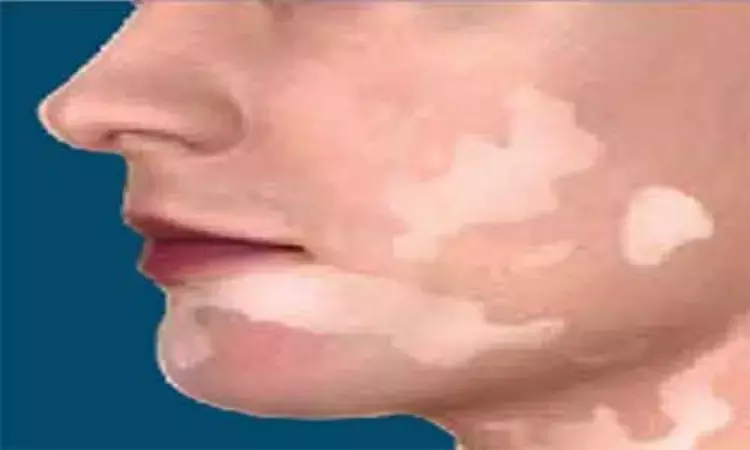- Home
- Medical news & Guidelines
- Anesthesiology
- Cardiology and CTVS
- Critical Care
- Dentistry
- Dermatology
- Diabetes and Endocrinology
- ENT
- Gastroenterology
- Medicine
- Nephrology
- Neurology
- Obstretics-Gynaecology
- Oncology
- Ophthalmology
- Orthopaedics
- Pediatrics-Neonatology
- Psychiatry
- Pulmonology
- Radiology
- Surgery
- Urology
- Laboratory Medicine
- Diet
- Nursing
- Paramedical
- Physiotherapy
- Health news
- Fact Check
- Bone Health Fact Check
- Brain Health Fact Check
- Cancer Related Fact Check
- Child Care Fact Check
- Dental and oral health fact check
- Diabetes and metabolic health fact check
- Diet and Nutrition Fact Check
- Eye and ENT Care Fact Check
- Fitness fact check
- Gut health fact check
- Heart health fact check
- Kidney health fact check
- Medical education fact check
- Men's health fact check
- Respiratory fact check
- Skin and hair care fact check
- Vaccine and Immunization fact check
- Women's health fact check
- AYUSH
- State News
- Andaman and Nicobar Islands
- Andhra Pradesh
- Arunachal Pradesh
- Assam
- Bihar
- Chandigarh
- Chattisgarh
- Dadra and Nagar Haveli
- Daman and Diu
- Delhi
- Goa
- Gujarat
- Haryana
- Himachal Pradesh
- Jammu & Kashmir
- Jharkhand
- Karnataka
- Kerala
- Ladakh
- Lakshadweep
- Madhya Pradesh
- Maharashtra
- Manipur
- Meghalaya
- Mizoram
- Nagaland
- Odisha
- Puducherry
- Punjab
- Rajasthan
- Sikkim
- Tamil Nadu
- Telangana
- Tripura
- Uttar Pradesh
- Uttrakhand
- West Bengal
- Medical Education
- Industry
Ruxolitinib cream associated with higher repigmentation of vitiligo lesions, study says

USA: Results from two phase 3 trials published in the New England Journal of Medicine showed that the application of ruxolitinib cream led to a greater repigmentation of vitiligo lesions compared to the vehicle control through 52 weeks. However, ruxolitinib cream was associated with acne and pruritus at the application site.
Vitiligo is a chronic autoimmune disease that leads to skin depigmentation and reduces the quality of life. The state is characterized by white patches correlating with a loss of melanocyte function in the epidermis. The high prevalence of coexisting psychosocial conditions among vitiligo patients affects the quality-of-life burden.
Some research has provided evidence for repigmentation in vitiligo patients after treatment with JAK inhibitors. A cream formulation of an inhibitor of Janus kinase 1 and 2, ruxolitinib, resulted in repigmentation in a phase 2 trial comprising adults with vitiligo.
David Rosmarin and the team conducted two phase 3, double-blind, vehicle-controlled trials -- Topical Ruxolitinib Evaluation in Vitiligo Study 1 [TRuE-V1] and 2 [TRuE-V2] in Europe and North America. The tests comprised patients 12 years or older with nonsegmental vitiligo with depigmentation covering 10% or less of the total body-surface area. Patients were randomly assigned in a ratio of 2:1 to apply 1.5% ruxolitinib cream or vehicle control twice daily for 24 weeks to all vitiligo areas on the face and body, following which all patients could apply 1.5% ruxolitinib cream through week 52.
An improvement of at least 75% from baseline in the facial Vitiligo Area Scoring Index (F-VASI; range, 0 to 3, higher scores indicate a greater area of facial depigmentation) was the primary endpoint or F-VASI75 response at week 24. Five critical secondary endpoints were improved responses on the Vitiligo Noticeability Scale.
The study demonstrated the following findings:
· 674 patients were enrolled, 330 in TRuE-V1 and 344 in TRuE-V2.
· In TRuE-V1, the percentage of patients with an F-VASI75 response at week 24 was 29.8% in the ruxolitinib-cream group and 7.4% in the vehicle group (relative risk, 4.0). TRuE-V2's percentages were 30.9% and 11.4%, respectively (relative risk, 2.7).
· The results for key secondary endpoints showed the superiority of ruxolitinib cream over vehicle control.
· Among patients who applied ruxolitinib cream throughout 52 weeks, adverse events occurred in 54.8% in TRuE-V1 and 62.3% in TRuE-V2; the most common adverse events were application-site acne (6.3% and 6.6%, respectively), nasopharyngitis (5.4% and 6.1%), and application-site pruritus (5.4% and 5.3%).
"There is a need for larger and longer trials to determine the effect and safety of ruxolitinib cream in vitiligo patients," the researchers wrote in their study.
Reference:
The study, "Two Phase 3, Randomized, Controlled Trials of Ruxolitinib Cream for Vitiligo," was published in the New England Journal of Medicine.
DOI: 10.1056/NEJMoa2118828
Dr Kamal Kant Kohli-MBBS, DTCD- a chest specialist with more than 30 years of practice and a flair for writing clinical articles, Dr Kamal Kant Kohli joined Medical Dialogues as a Chief Editor of Medical News. Besides writing articles, as an editor, he proofreads and verifies all the medical content published on Medical Dialogues including those coming from journals, studies,medical conferences,guidelines etc. Email: drkohli@medicaldialogues.in. Contact no. 011-43720751


